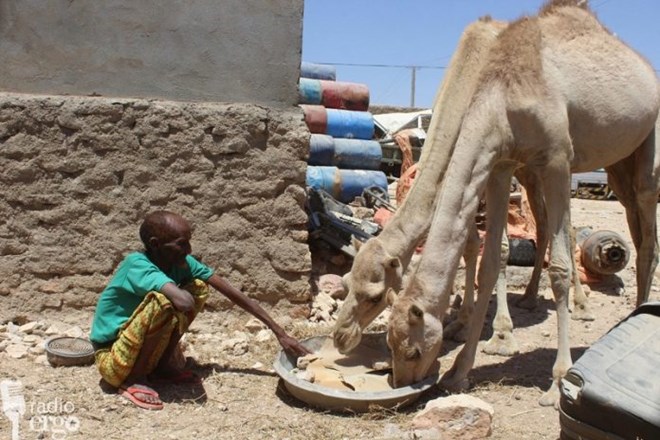
Friday January 21, 2022
Abdiwahid Mohamed learnt a painful lesson in the terrible drought of 2016-17, when he lost 350 goats and 55 camels. Now, as drought once again ravages Somalia, he says he has not been affected because some of his camels are producing good quantities of milk being reared in a camel camp.
He was informed about this new method of rearing camels by a relative, who tried it and saw the benefits. For a year and a half, he has been keeping nine of his camels in a camp in Bancadde village, 120 km north of Lasanod in the northern Sool region, spending $600 on their monthly fodder, water, and veterinary treatment.
His two brothers look after the camels, milking them morning and evening, and producing 45 litres of milk a day that Abdiwahid sells for a dollar a litre to milk sellers in Lasanod. The milk sellers sell the milk locally for $1.5 a litre.
His milk sales cover the costs of buying water and pasture for his 120 goats and 11 camels that are kept traditionally, roaming and grazing, as well as paying the bills for his family of 16 members.
“We have learnt the benefits of this new method now,” Abdiwahid told Radio Ergo. “In the old way, we used to spend a lot of money on the camels, without getting any benefit in return. The only benefit we used to get was milk that the camel keeper would drink, nothing more.”
Abdiwahid used to take loans during the dry seasons to feed his livestock. He borrowed a hefty $4,000 in 2016-17 to buy animal feed. He managed to pay back half of the loan in May 2021 with savings from the sale of milk from the camels kept in the camp.
“The goats drink 3,600 litres of water in 12 days, which costs $100. I also spend $200 on feeding and watering my camels. Besides that, I pay the family bills and a monthly school fees of $150 for my three younger brothers,” Abdiwahid calculated.
The severity of the 2016-17 drought and the shock of such devastating losses spurred many pastoralists to develop a variety of alternative sources of income.
Abdullahi Mohamed Ali’s family in Maraalay village, 55 km south of Lasanod, lost 350 goats and 40 camels in the drought five years ago and were almost bankrupted. He decided to sell some of their remaining animals and invest in a business. He bought a dump truck and has been making $200-$300 a month transporting stones to construction sites.
When the current drought hit, he saw an opportunity selling water and mounted a tank onto the truck. He buys water from a well on the outskirts of Lasanod for his family and for their 150 goats and 15 camels. The family and their herd use 18 barrels of water (3,600 litres) every four days. On the other days, he sells water at $75 for 18 barrels to the other pastoralist families in the village.
“For us, the drought hasn’t affected us, thanks to this truck. We get money for fuel from the locals who buy the water,” Abdullahi said.
Mohamoud Ali Jama, another pastoralist, now owns a retail shop in Lasanod town that his family bought with $3,750 from the sale of 50 goats in 2019. Mohamoud told Radio Ergo that he has been sending home $120 a month since October from the shop profits to enable his family to pay their bills and feed their 100 goats.